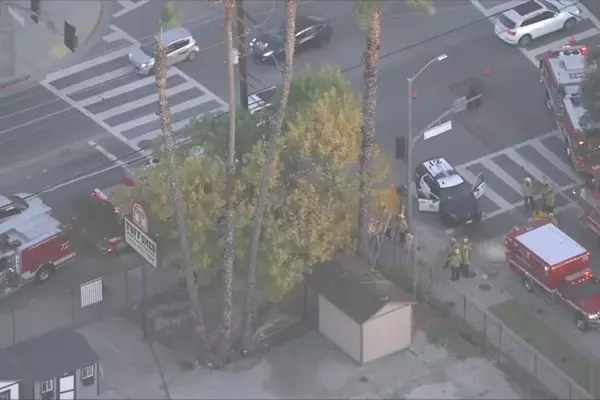IN a year’s time, Scots will be queuing up at polling stations ready to cast their ballots in the Holyrood election.
The General Election last June represented a dark day for the SNP as their presence at Westminster significantly diminished, but Labour’s time in the sun has been short-lived.
Meanwhile, the English local elections earlier this month confirmed what the polls have been telling us; that the rise of Reform UK is real.
So what is the state of play with the Scottish parties as we move into the final year of the Parliament? We spoke to top pollster Professor John Curtice for his verdict.
The ‘lucky general’ John Swinney
First Minister John Swinney feared the SNP would be wiped out at Westminster, which didn’t quite come to pass, but they were left with just nine MPs following the vote last June.
Curtice said there hasn’t been a tremendous amount of progress made since the General Election, with them polling at about 34%, just a few points ahead of what they attracted last year.
But Curtice explained the rapid decline in support for Scottish Labour on the back of unpopular UK Government policies has played into the SNP’s hands.
“There’s not been a great deal of progress by the SNP, but this is where Swinney is a lucky general,” he told the Sunday National.
“The collapse in Labour support and the rise in Reform has just turned a third of the vote from a losing share to a winning share.”
Consecutive polls have suggested the SNP look like the only party capable of forming a government and a pro-Yes majority looks promising.
But they are set to end up with fewer MSPs than they have now, meaning they will need significant help to get budgets and legislation over the line.

“Until Sturgeon resigned, it was as though the SNP’s record in government didn’t matter. The opposition could constantly criticise them, but it was like water off a duck’s back because the constitutional question dominated,” he said.
“When Sturgeon resigned, the insulation of the constitution became thinner, you then began to see that people who had voted for the SNP in 2019 or 2021 were now less willing to do so if they felt the health service was not working very well.
“The question is can they or can they not be as effective as Wes Streeting in turning it around? If Labour do turn it around south of the Border, and the same thing doesn’t happen in Scotland, that will be an issue for the SNP.”
The only way is up for Reform UK
If anyone was in any doubt about whether Labour’s popularity has plummeted quite as fast as everyone has been suggesting, the English local elections last week confirmed it.
Reform are coming and while Curtice says they are not as popular in Scotland as they are south of the Border, the polls indicating their rise in the nations are becoming more alarming by the week.
They were predicted to clinch 21 seats at Holyrood in a Survation poll last week, which would make them the main opposition ahead of Labour and the Tories.

“The SNP now have to hope that Reform are close to the top of their curve, or they could start challenging for constituency seats.”
Sarwar back to square one
Labour swept Scotland at the General Election, but the high was brief, and they’ve been left with quite the hangover.
According to Curtice’s analysis of a poll by Survation last week, Anas Sarwar’s party would end up behind Reform in third place with just 18 seats – four fewer than they currently have. So much for “change”.
Curtice said: “They are all the way back to where they were in May 2021.
“The rise of the Labour Party in Scotland had nothing to do with Scotland. It started with partygate and then the Liz Truss fiscal event. They were already at 30% when Sturgeon resigned.
“The resignation of Sturgeon did enable them to pick some votes off the SNP but the foundations of the rise was all to do with what was happening at Westminster and therefore [their position now] is everything to do with what is happening at Westminster.
“It’s very difficult for him [Sarwar] to escape the shadow of the performance of Labour down south.”
An all-time low for Conservatives
If the downward trajectory in support for Labour has been staggering, then the one for the Conservatives has been colossal.
The Tories polled at 11% and 12% in the constituency and list vote in the Survation survey last week which would only get them 13 seats, leaving them firmly in fourth place in the chamber.
“All the gains made in the Ruth Davidson era are gone,” said Curtice.

“Blame Boris Johnson and Liz Truss.”
Greens ‘unscathed’ despite rollercoaster
The Greens have been on quite the journey since amassing their greatest haul of MSPs ever in 2021.
In government under Nicola Sturgeon, then out of government under Humza Yousaf, but Curtice says they have come off the rollercoaster relatively unscathed.
Polls suggest they will secure at least the number of seats they already have and potentially a few more, but they do have a leadership contest on the horizon with Patrick Harvie stepping back as co-leader in the summer.
So far, Lorna Slater and Gillian Mackay have put themselves forward for election, with Ross Greer expected to follow.
Curtice said: “What matters to the Greens is the list vote so they could pick up about 10 seats which is a few seats up.
“They have come through the coalition and the unravelling of it largely unscathed. Of course, they will have to survive Patrick Harvie standing down as leader.”
Curtice also questioned whether Swinney was “throwing bait” to the Greens with his decision to get rid of peak rail fares after the trial was deemed to have failed just a few months ago.
Alba’s new era
Polls have seemed to disagree on where Alba are at, with some suggesting they wouldn’t get any seats and others indicating they could get seven.
Currently, the party has just one MSP in Ash Regan (below).
Curtice said: “Some people will question whether they can survive the death of Alex Salmond, and I would say it’s equally true there was no chance there were ever going to go anywhere with Salmond as leader.
“Alex’s personal reputation was destroyed by the court case. No matter the rights and wrongs, he had become toxic.

LibDems back on the bureau
Following the defection of Jamie Greene from the Tories, the LibDems have been enjoying life back as a recognised party on the Scottish Parliament bureau, increasing their influence and gaining more speaking time.
Looking at the polls, Curtice says they are running at about 10% and look to be in a position to potentially make gains.
“It looks as though they might now be doing well enough to pick up the odd list seat,” he said.
“They certainly should be able to get past the threshold to be a recognised party on the bureau. They ought to emerge in a better position than they did in 2021 and their position at a UK level is as strong as it has been at any stage since 2019.”







